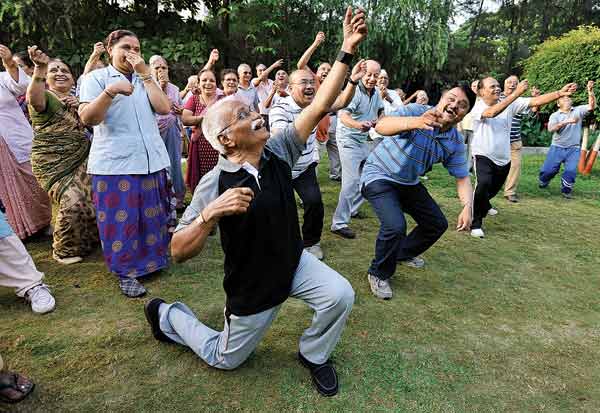
Learning to laugh with a group is often easier, you can benefit from laughing by yourself for 15 minutes a day.
Here's the laughter exercise:
- Give 3 big, noisy sighs as you inhale through your nose and exhale through your mouth.
- Stretch gently. Bring your shoulders to your ears; then lower gently. Rotate feet and elbows; turn your head from side to side—gently.
- Take a few deep abdominal breaths and release slowly.
- Holding your hands under your belly, make a laughing "ho-ho-ho." Make sure the sound comes from your core (you'll feel it in your hands when you're doing it right). Repeat 3 groups of 3, several times.
- Change the sound to "ha-ha-ha" and repeat as above.
- Change the sound to "hee-hee-hee" and repeat as above.
- Put all 3 sounds together—"ho-ho-ho, ha-ha-ha, hee-hee-hee"—and repeat for 3 rounds, continuing until you develop a rhythm.
- After the final round, break into your own natural laughter. Continue for a few minutes. If it becomes difficult, stop and go back to step #3 and start the laughing cycle again.
The exercise may feel contrived at first, but your normal laugh will come.
"We have gotten ourselves so overscheduled and overwhelmed that we forget to be like children. We forget to give ourselves permission to be happy, to smile,".
"This is one tool to put in your toolbox to make your life more rewarding and make you feel better."

